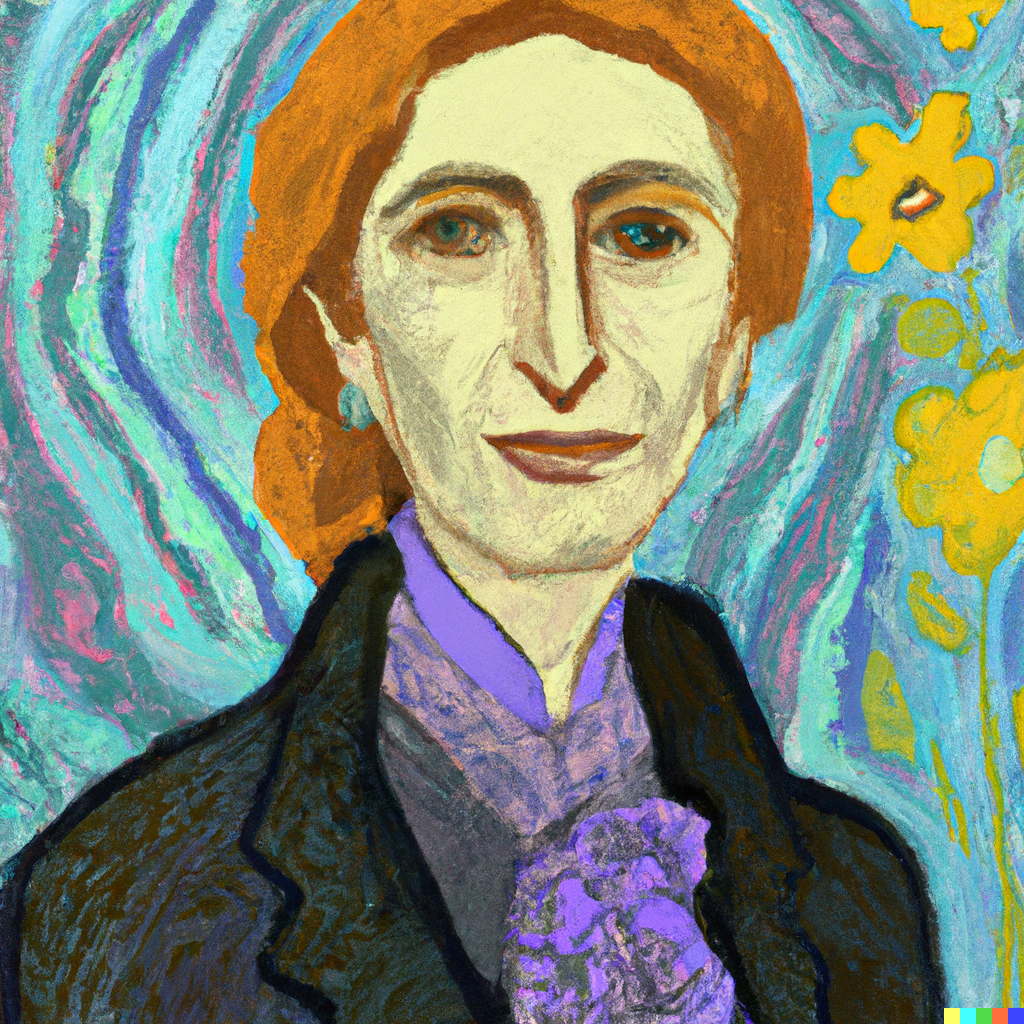With OpenAI’s announcement of Sora, it seems as if the conquest is complete: text is done and dusted, images too, and now video. Generative video has been in the works for some time, but with Sora, OpenAI has taken a leap and shown us the possibilities. There is no looking back from here, is there?
You don’t need a PhD in computer science to know where this is going. I don’t have one (yet!), so here is my take.
1. Generative AI will soon be default.
Sooner than we think, faster than we like, quicker than we can adapt, we will soon see generated text, audio, images, and video everywhere. The revolution though, will lose its hype and will be more mundane than the excitement we’re seeing today. It will be ubiquitous, and we will adapt to it as a natural progression of computing.
GenAI will make production faster, better, and cheaper. If you had the choice of producing a grammatically correct, engaging and fact-checked (heh) essay faster and cheaper, why would you spend hours and hours researching and writing draft after draft? The same goes for any other form of media, including imagery, audio, and now video. You really don’t want to spend time, money and effort in production when you can do just as well – almost – by typing a few words in a text box in an app of your choice.
Besides generating content assets, GenAI also makes all kinds of editing, extension, variation and just about any modification easy. Many of us already run text content past ChatGPT to tidy it up. The same goes for video – not only will Sora, and upcoming competitors, be able to generate a meaningful video clip, but it will also help you extend video, generated or original, create newer versions of it with variable settings, and potentially help you create a full-length feature by merely writing a good prompt or a series of them. Take a good look at the research tab on the Sora page and see for yourself.
2. GenAI will be built into content creation tools.
In fact, much is already here. You can see the signs of widespread availability enabled through Microsoft’s Copilot. Even here on LinkedIn, the text editor offers to write for you, and if you observe carefully, a lot of updates and comments do seem machine written. Gmail will write for you, and in no time, you will be able talk to your mum without really talking to her, in your own voice (but don’t, really).
Ever since DALL-E was released in 2021, almost every type of player in the imagery business has a version of text-to-image. There’s Canva. There’s the big daddy, Adobe with Firefly. Getty? Done. Can Shutterstock be far behind?
As Sora moves ahead and others catch up, we will no longer need to learn the tools of cinematography or editing, even though you will still need to master the art of it. You will still need to be highly creative, understand light, be able to craft a story, with a plot and setting, and so on.
Users of Adobe Photoshop are already doing this for imagery. Adobe has brought GenAI into a product that is heavily used by the creative community, and – I like to put it this way – un-photoshopped Photoshop. There are great tools to do all kinds of creative and editing work, but you can do as much without using any of them, simply instructing the software to do what you want it to do. For example, removing an object, like a chair, from a picture of people was a painstaking job, requiring us to edit pixel by pixel using the “magic wand” and other tools to fill up the gaps. If you do too much of this, you run the risk of repetitive stress injuries. Now you can simply ask Photoshop to “remove the chair” and select it, and hey, poof. Your chair is gone. I’ll bet my last million dollars that Adobe is at work bringing such capabilities to its video products. If OpenAI can do it, it’s only a matter of time. However, you still need to know what to remove and what to retain.
I’m not a coder but Github copilot pretty much does this – or even more – with code.
3. Human-created content will exist and be ‘premium.’
As things stand today, content generated by AI is not perfect. While most of what you consume will be AI-generated in full or in part, you will continue to seek out original content and experiences. You don’t have to go far to seek out a comparison for this: we still seek out live experiences while we could have just as much entertainment if it is canned and available to us on-demand.
Human-generated content will be labelled as such (see the bottom of this post), and maybe priced much higher than AI-generated or modified content. In time, we will ascribe a certain value for it and willing to pay for it. How will this look like in reality? Imagine if Balaji Telefilms, possibly the most prolific producer of the genre widely known as saas-bahu soaps, uses all its past content to generate newer and newer shows. This will be available to you free or at a low price. It may well work for those who consume the same quality of shows, and of course Balaji will make a great deal of money out of it. But do you want new shows conceived, written, acted, and produced by a human? Something like Francis Ford Coppola’s The Godfather? Pay more.
Which is not to say that masterpieces will be created with stone, chisel and hammer; it’s that human-led content that will be heavily dependent on natural intelligence and the whole gamut of the human experience – emotion, feeling, angst, joy or whatever that machines cannot do, will be attractive to you.

You see these examples in food; handmade, artisanal bread is more expensive than industrialized bread though the nutritional benefits are likely to be more in the latter given that it contains fortified micronutrients. It doesn’t sell as much but is still a decent business attracting its own niche, localized consumer.
4. Content will be created specifically for AI.
One of the biggest debates raging presently is GenAI giants’ disregard for copyright and misuse of publicly available data, some of which as resulted in class action suits against GenAI corporations. OpenAI is already being interrogated for its use of copyrighted content and the questionable means in which it trains its AI, and rightly so. Many large corporations are also wary of using content that has doubtful copyright claims and could attract legal claims. In fact, Getty and Adobe have made this a USP – all of Getty’s AI-generated imagery is generated from its own substantial stack of photography and graphics.
You can sense how this is going to evolve: more and more media houses will use in-sourced material as their “moat” and offer you the option to generate your own content on their platforms using their intellectual property, be it text, audio, imagery, or film. Sooner rather than later, they will feel the need to massively expand and enrich their datasets, and will start sourcing from us humans at scale. We’re already doing this for the stock image shops, and very likely a lot of us are already being contacted to write away our content for a fee.
5. We will still have our jobs.
Almost every thought piece on the AI x Job topic begins with this emphatic statement that’s repeated so much that it’s in danger of becoming a cliché: AI will not replace you, but a human using AI may.
But there’s a grain of truth in it. While we’re expecting GenAI to get better and better as it learns exponentially, the current threat of hallucination and disregard for the laws of physics will be eliminated or at least minimized to become unnoticeable except to the very trained eye.
Most image-generation AI tools also provide you with various options to choose from, because the root of GenAI is statistical probability: it gives you the most probable output to your text prompt. Anyone using GenAI regularly for image generation knows that writing a good prompt is an essential skill, but to have that perfect image, one needs to do a few tweaks, an intervention here, and a couple of more instructions perhaps. (The images on the post took quite a few prompts to get to this level, and I am still not happy). For this, like I’ve said earlier on this note, you need to be able to know what works for you and what doesn’t. AI won’t yet eliminate the creative job. At least, not in a mass scale anyway – who am I to predict how things will shift.
For some good insights on how GenAI may augment or eliminate jobs, read this note by Sangeet Paul Chaudhary. Also, the comment by G Parthasarathi in my earlier note on Sora is worth reading and reflecting on.
6. And geniuses will genius.
There’s also tons of conversation and commentary on the impact of AI on many professions. These range from the enthusiastic to the alarmist. We are still a little away from Artificial General Intelligence (AGI) that is a level more sophisticated than Gen AI, but here is Sam Altman saying 95% of advertising and marketing work will be done by AGI. 95%? Yes, that’s what he says. Futurist Ray Kurzweil says AI will be as intelligent as a human being by 2029, which Elon Musk ups to next year, 2025.
Eventually, the hype will blow over and we will adapt to AI, especially GenAI without much fuss. Sure, a few blokes will be rich. But will it kill us? Nah.
Note: Generative audio is already here in some form. Text to speech is widely available and generative music has seen some advancement. OpenAI put out some work in instrumental and vocal generation as far back as 2020. Google introduced generative music in 2023. And there is Stable Audio)
This note is written by a human. I swear. You can see the imperfections, can’t you? The image, though, is generated by DALL-E 2 to the prompt “Virginia Woolf, van Gogh style.” It took a few tries. You should see the options I rejected. Ha.

Leave a Reply